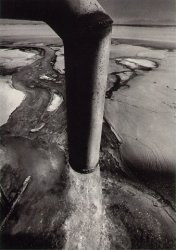Mercury: The Tragedy of Minamata Disease
Lessons Learned: Looking Back to Go Forward
A series of articles exploring historical events that provide an important lesson for ensuring a more sustainable and healthy environment. Originally published as a bulletin feature for the newsletter of CHE-WA (Collaborative on Health and the Environment, Washington State chapter); produced by Steven G. Gilbert.
 On May 1, 1956, a doctor in Japan reported an "epidemic of an unknown disease of the central nervous system," marking the official discovery of Minamata disease.
On May 1, 1956, a doctor in Japan reported an "epidemic of an unknown disease of the central nervous system," marking the official discovery of Minamata disease.
In the late 1950s Minamata Bay, Japan became contaminated with mercury from a nearby factory manufacturing the chemical acetaldehyde (Chisso Corporation's chemical waste pipe). The mercury was biotransformed by bacteria in the water into methylmercury, or organic mercury, that bioaccumulated and biomagnified in the muscle of fish. First, local cats that ate the fish began to stagger about and die. Then, the local population of people that depended on fish were affected, particularly developing fetuses and children. Over two thousand people died, and thousands more experienced crippling injuries.
We learned that the solution to pollution is not dilution: mercury dumped into the bay concentrated and returned with tragic consequences. We also learned that the placenta is not a barrier to environmental contaminants and that the fetus is exquisitely sensitive to mercury. Unfortunately we learned these lessons again during the 1970s in Iraq, when people consumed seed grain that had been treated with a mercury-based fungicide.


